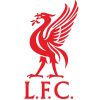Thames Ironworks FC’s first home stadium was the Old St Luke's ground in Hermit Road, Canning Town.
The venue was described as a 'cinder heap' and 'barren waste' and was surrounded by a moat and had canvas sheeting for fencing!
The former home of Essex’s first-ever professional football club, Old Castle Swifts FC, which had been formed by the merger of Old St Luke's FC and Castle Swifts FC in 1894, Hermit Road was vacated by its former tenants in summer 1895, enabling the newly-formed Thames Ironworks FC to move in.
Situated less than a mile north of the Thames Ironworks and Shipbuilding Company at the mouth of Bow Creek on the north bank of the River Thames, Hermit Road would play host to the club’s inaugural fixture against Royal Ordnance Factories FC on 7 September 1895, which ended in a 1-1 draw.
Unfortunately, Hermit Road was not considered suitable for Thames Ironworks’ maiden competitive fixture, an FA Cup first qualifying round tie with Chatham Town on 12 October, and the match was switched to the Kent League club’s own Maidstone Road Ground. Chatham won 5-0.
While Chatham did not want to visit Hermit Road, the same could not be said of Woolwich Arsenal and two-time FA Cup winners West Bromwich Albion, who both visited for special ‘floodlit’ friendly matches in March 1896. For the record, the Ironworks were beaten 5-3 and 4-2 respectively.
Thames Ironworks were admitted to the London League for the 1896/97 season – perhaps no surprise when you learn that Thames Ironworks managing director Arnold Hills was president of the competition.
The Club hosted their first-ever league fixture on 19 September 1896, when Crouch End-based Vampires were vanquished 3-0 thanks to two goals from debutant centre-half EG Hatton and one from ship’s plater and inside forward George Gresham.
Thames Ironworks’ second league match at Hermit Road would also be their last.
On 8 October, they beat 1st Scots Guards 1-0. Later the same month, they were handed an eviction notice by their landlords. The club had violated their tenancy agreement by charging admission fees and building a perimeter fence and pavilion.
Thames Ironworks had to play their next five fixtures away from home, including an 8-0 FA Cup defeat at Sheppey United, until the Club’s management found a new home at Browning Road in East Ham in early 1897.

